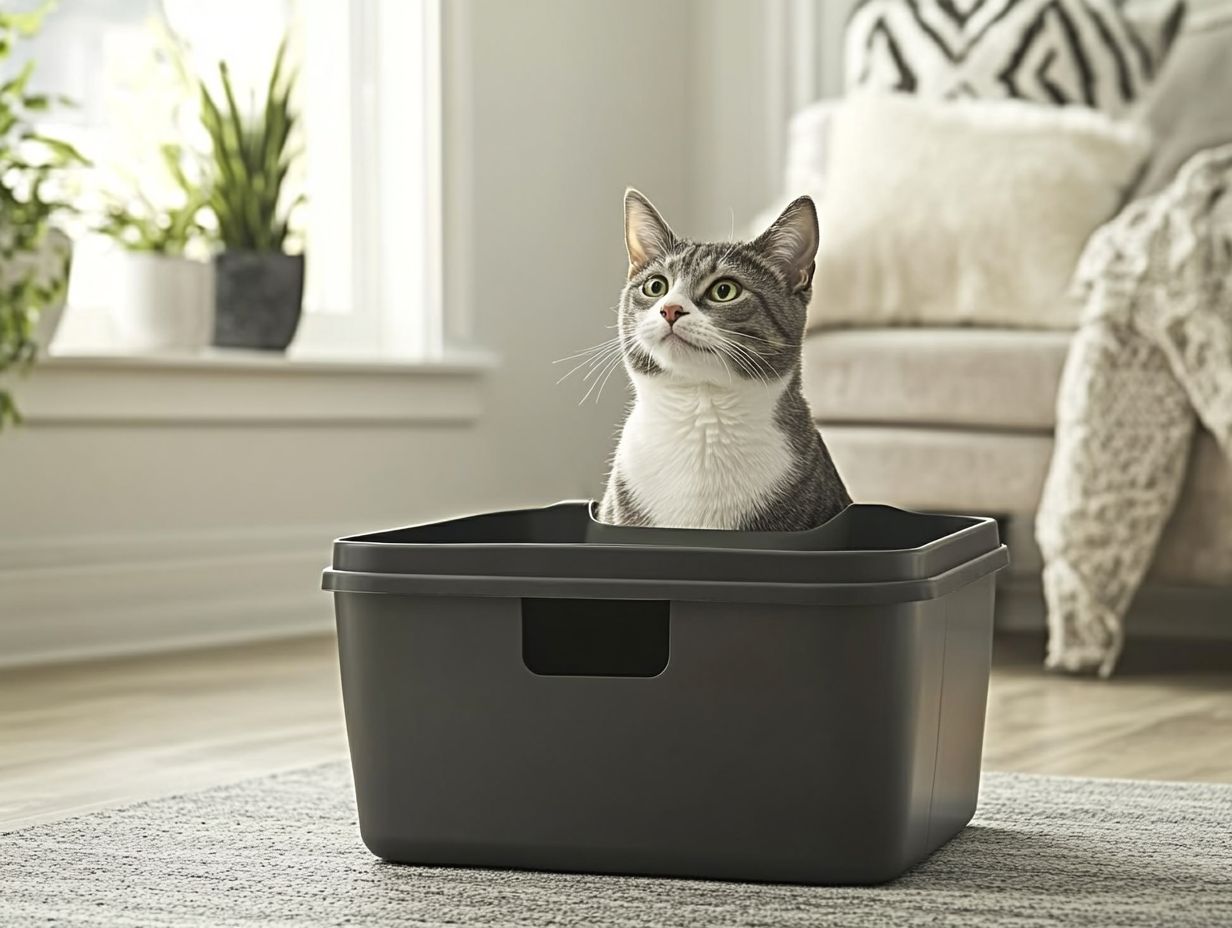When it comes to keeping our feline friends happy and comfortable, the choice of litter box—including its dimensions and design—can make a significant difference in cat welfare.
Covered cat litter boxes are a popular option among cat owners, but are they truly the best choice for addressing cat preferences and instincts?
This article explores the pros and cons of covered litter boxes, how to introduce them to your cat, and the best types available, including automatic cleaning litter boxes.
If you’ve ever wondered whether your cat prefers a covered or open litter box, or if you’re looking for ways to maintain a clean and odor-free environment, this guide will provide all the insights you need, including cleaning recommendations and litter box setup tips.
Key Takeaways on Covered Cat Litter Boxes:
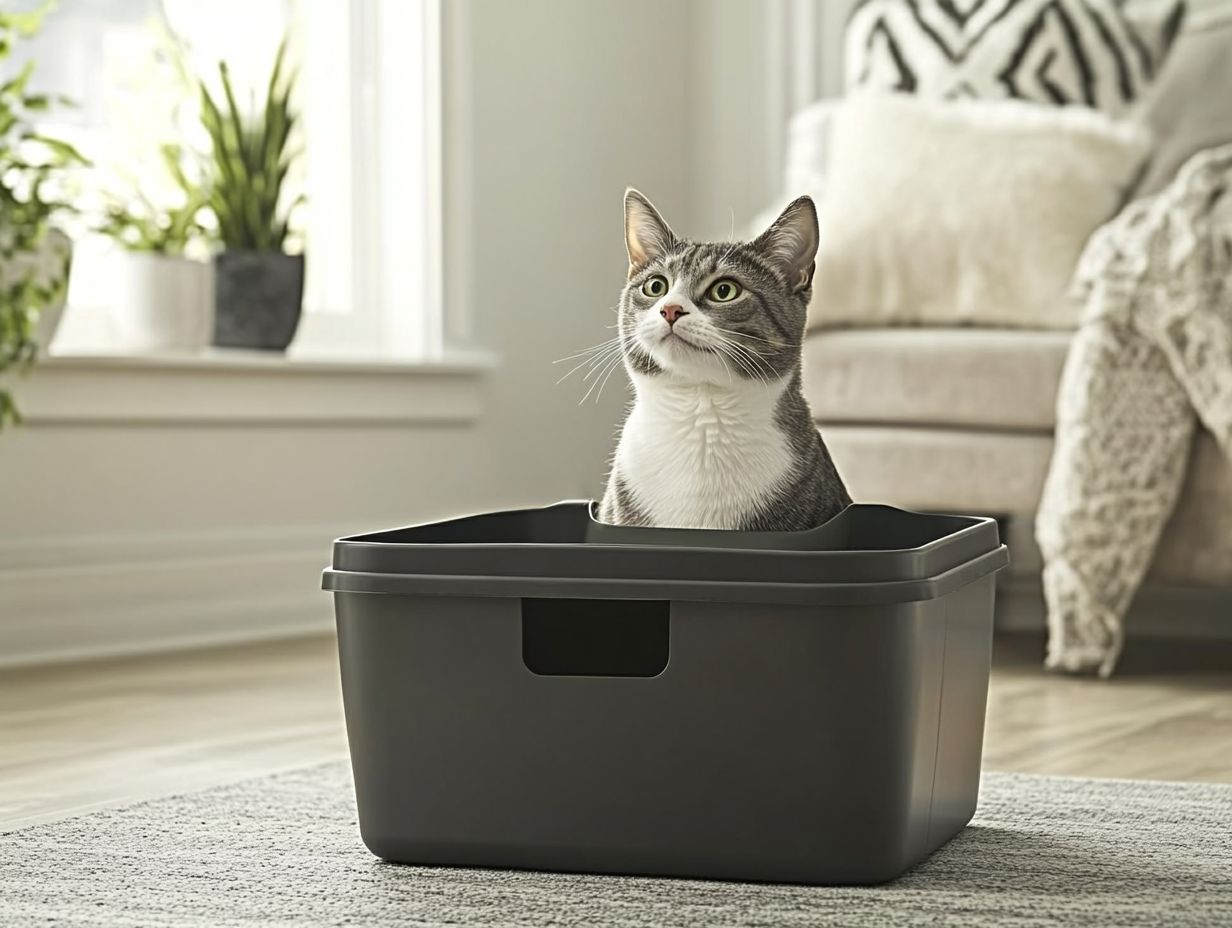
What Are Covered Cat Litter Boxes?
Covered cat litter boxes are designed to provide privacy and minimize litter tracking. They serve as important tools for managing how cats go to the bathroom while addressing their specific needs, including hygiene and litter box management.
These boxes often feature high sides to contain litter and create a sense of safety, making them suitable for both single and multi-cat households. Available in a variety of designs and sizes, covered cat litter boxes ensure that cat owners can find the perfect option to meet their pets’ comfort and hygiene requirements.
Why Do Some Cat Owners Choose Covered Litter Boxes?
Covered litter boxes are among the most popular options due to their ability to help keep the litter area clean and minimize litter tracking. This can improve overall household cleanliness, reduce litter box aversion, and align with veterinary recommendations for litter box location.
By preventing litter from being kicked out and containing odors that would otherwise spread throughout the home, covered litter boxes contribute to a cleaner environment. They align with a cat’s instinctual behavior by providing a sense of security, as they are somewhat hidden while the cat uses them.
In multi-cat households, covered litter boxes can help reduce territorial disputes, making them an excellent choice for improving the dynamics in such settings. Additionally, these boxes keep curious pets out of the litter, helping to maintain cleanliness and decreasing the likelihood of attracting unwanted attention, ultimately enhancing overall cat welfare.
Do Cats Prefer Covered or Uncovered Litter Boxes?
A cat’s preference for covered or uncovered litter boxes often depends on its individual behavior and comfort level. Some cats appreciate the privacy offered by covered boxes, while others may feel stressed in enclosed spaces. This can lead to potential elimination issues and affect their behavior.
What Are the Pros and Cons of Covered Litter Boxes for Cats?
Covered litter boxes offer both advantages and disadvantages for cat owners considering their pets’ comfort and hygiene needs. They can reduce litter tracking and odors. However, they may also increase the risk of making cats feel trapped. As the name suggests, covered litter boxes feature a lid, which is sometimes removable. This design can significantly influence how the litter box is used.
One of the most notable benefits is that the cover helps contain messes, keeping the surrounding area cleaner—particularly in active households with multiple cats. However, the covered design necessitates that owners ensure adequate airflow to prevent odors from becoming trapped inside the box. Some cats may feel claustrophobic in a covered box, potentially leading them to avoid it altogether. This avoidance can result in messes outside the box, complicating both cleaning and the effectiveness of the box design.
What Are the Best Types of Covered Litter Boxes for Cats?
Types of Covered Litter Boxes
- Automatic Cleaning Boxes: These self-cleaning options make maintenance easier for busy cat owners.
- Traditional Covered Boxes: Simple designs that offer privacy and odor control.
- Biodegradable Options: Eco-friendly choices for environmentally conscious pet owners.
When considering the best covered cat litter box for odor control or the best solutions for cats peeing outside the litter box, it’s vital to observe your cat’s behavior and preferences closely.
In conclusion, the choice of litter box—whether covered or uncovered—should align with your cat’s individual preferences and behaviors. By observing your cat closely, you can make the best decision to ensure their comfort and well-being.
The best types of covered litter boxes for cats include hooded, top-entry, side-entry, and self-cleaning litter boxes. These options cater to the specific needs of both single-cat and multi-cat households. Experts recommend having one litter box per cat plus one extra to ensure comfort and accessibility.
1. Hooded Litter Boxes
Hooded litter boxes feature a lid that provides cats with privacy, helps contain odors and litter, and contributes to their popularity among cat parents who prioritize cleanliness and litter box features.
These boxes minimize messes by limiting the amount of litter that escapes outside, and their front entrance often encourages even the shyest cats to use them. The enclosed design offers a sense of safety for cats, which can help reduce stress levels and improve their elimination habits, as supported by veterinarians.
Most types of cat behavior can be accommodated by these boxes, as they come with easy-to-clean surfaces, built-in filters to manage odors, and sizes such as small (18x15x15 in), medium (22x19x18 in), and large (26x24x20 in) to ensure maximum comfort for your feline family members.
Potential Drawbacks
Some cats may initially resist using a hooded box due to unfamiliarity. Gradual introduction is recommended.
2. Top-Entry Litter Boxes
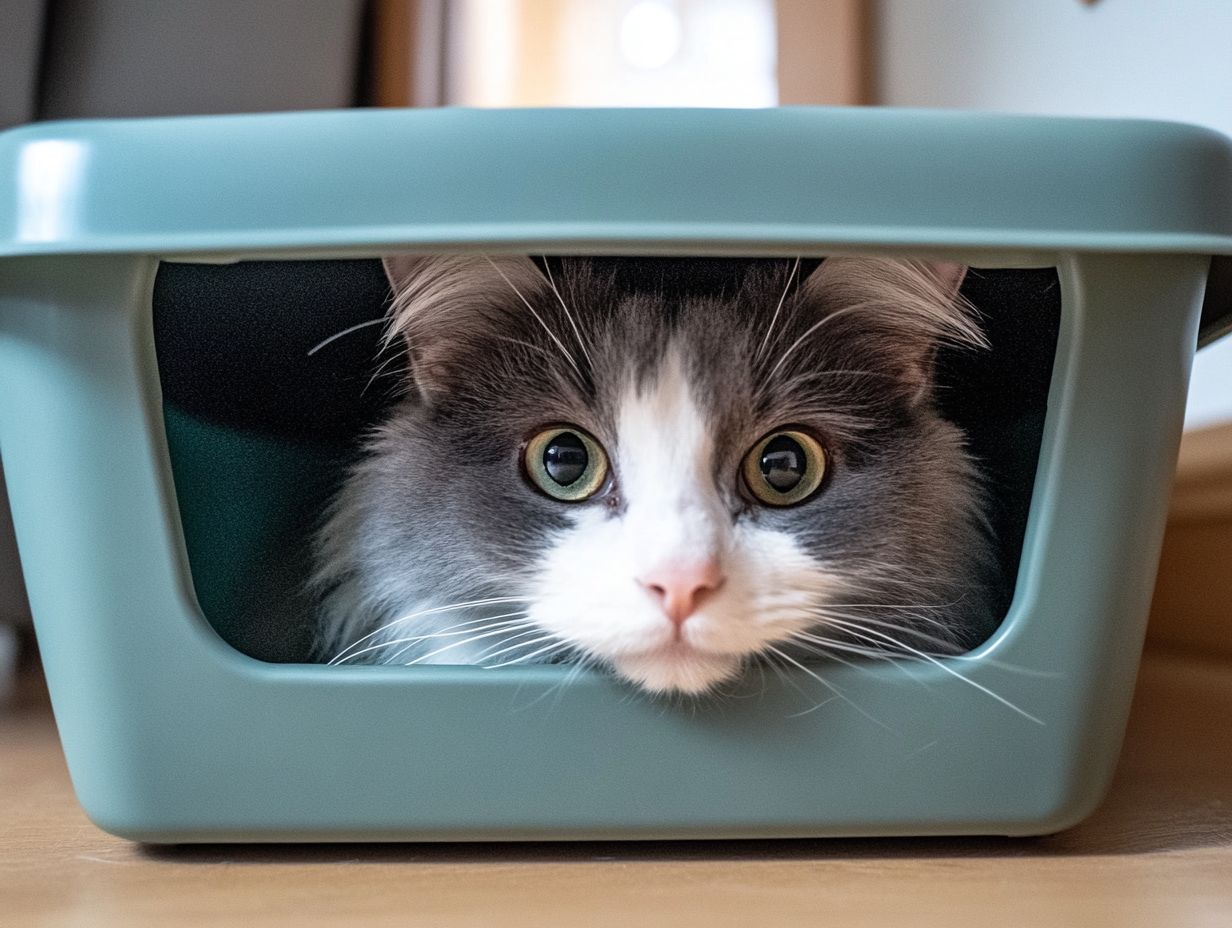
Top-entry litter boxes feature a design that requires cats to enter from above, making them less likely to track litter outside the box and create a mess in the surrounding area. This design is ideal for homes where cleanliness is a priority, as it minimizes spills and litter scattering.
Pet owners who value a tidy space will find this aspect particularly appealing. The enclosed design also encourages cats to dig and bury their waste without scattering it on the floor, making it a comfortable litter box choice for various cat behaviors.
However, some cats may feel uncomfortable or anxious using this style, particularly those with mobility issues or elderly pets. Therefore, while this design promotes cleanliness, it’s essential to consider the comfort and behavioral needs of the feline members of the family.
Potential Drawbacks
Top-entry boxes may cause anxiety in some cats, particularly if they have difficulty accessing the entry point.
3. Side-Entry Litter Boxes
Side-entry litter boxes provide easier access for cats, particularly senior cats or those with mobility challenges, allowing them to use the litter box without unnecessary strain.
This innovative design enables access from the side, reducing the need for jumping or climbing over high edges, which can be difficult for older or injured cats, ensuring a comfortable litter box experience.
By eliminating the barriers often presented by traditional boxes, these litter boxes encourage better usage and help maintain overall hygiene in the home.
Potential Drawbacks
Pets may still prefer more enclosed options, so it’s crucial to monitor their behavior when transitioning.
4. Self-Cleaning Litter Boxes
Self-cleaning litter boxes are gaining popularity among cat owners due to their automatic features, which reduce the labor associated with litter maintenance while promoting a hygienic litter area. These boxes utilize sensors to detect when a cat has used them, triggering a rake or scooping mechanism that removes waste shortly after it has been deposited.
This process minimizes unpleasant odors and helps keep the litter clean, significantly improving the overall environment. Convenience is another important aspect, as busy cat owners appreciate being able to spend more time enjoying their pets without the daily responsibility of scooping litter.
However, potential downsides include the initial investment cost and the need for occasional maintenance to ensure proper functionality. It is essential for cat guardians to weigh these factors, as making the right choice can lead to a much more hygienic and enjoyable caregiving experience.
Potential Drawbacks
Self-cleaning boxes may require more initial investment and can lead to a reliance on technology that may fail.
How to Introduce a Covered Litter Box to Your Cat?
Introducing a covered litter box to your cat requires careful consideration of their behavior, as creating a positive transition is essential for their comfort and preferences. Gradually placing the new box in a familiar area and using positive reinforcement can help.
Definitions:
- Self-Cleaning: A litter box that automatically scoops waste after the cat has used it.
- Mobility Issues: Physical difficulties that make it hard for pets to move around, such as arthritis.
Checklist for Choosing and Transitioning to a Covered Litter Box
- Assess your cat’s behavior and preferences.
- Ensure the box size fits your cat comfortably.
- Consider the litter type; options like clumping clay are often best.
- Monitor your cat’s reactions during the transition.
- Maintain cleanliness by scooping daily and washing the box regularly.
To minimize the risk of behavioral issues, start by placing the new covered box next to the old open box, allowing your cat to explore it at their own pace. Encourage them to use the new box by enticing them with treats or toys, and consider using a box with a lid that can be taken off or put back on until they become accustomed to it.
Keep both boxes available for the first few days to help your cat feel secure in their environment. Once you notice that they are using the new box more frequently, you can remove the old open litter box, but only after you are confident that they have accepted the new one, ensuring a cluttered environment is avoided.
The most crucial factor in helping your cat adjust to the new box is cleanliness; a clean and fresh-smelling environment will facilitate their acceptance of the new system. Regularly scoop the litter to maintain cleanliness and encourage use.
How to Encourage Your Cat to Use a Covered Litter Box?
To encourage a cat to use a covered litter box, it is important to provide a box with the appropriate material and depth, place it in a quiet corner of your home to help your cat feel safe, ensure it is kept clean, and employ positive reinforcement techniques, such as adding treats to the box, aligning with litter box location and cat comfort considerations.
While covered litter boxes, like the Catit Jumbo Hooded Cat Litter Pan or Van Ness Enclosed XL Cat Litter Pan, can enhance a cat’s sense of security, factors like location, cleaning tips, and cleaning habits, and overall environment also play a significant role in whether a cat will use them. Cats prefer to go to the bathroom in spaces where they feel safe from potential threats and can leave at any moment if they sense danger. Covered litter boxes can help create this sense of security. Additionally, those with a flap can hide distracting odors and prevent litter tracking outside the box, which is ideal for maintaining cat hygiene.
However, if the covered box is too dark, too small, or difficult to access, cats may refuse to use it or become anxious while doing so. Boxes with small entrances can feel stifling, especially for larger cats or those that are less agile. Some cats also dislike covered boxes with flaps, particularly if the flap material is difficult for them to push aside. Many cats actually prefer open litter boxes, and if they only have access to a covered one, they may choose to eliminate elsewhere in the house.
The best approach to encourage your cat to use a covered litter box is to watch how your cat interacts with both covered and open boxes to understand their preferences better.
What Are the Alternatives to Covered Litter Boxes?
Uncovered litter boxes offer easy access for both cats and their owners during cleaning. Cats that dislike enclosed spaces or have had negative experiences with covered boxes may prefer these open options.
- Pros of Uncovered Litter Boxes:
- Less anxiety for cats
- Easy access for cleaning
- Cons of Uncovered Litter Boxes:
- Higher potential for litter mess
- Less odor control
Open-top litter boxes provide ample space at the top and eliminate the potential issue of a lid that could frighten the cat. These boxes can feature added walls or barriers to help contain the litter while maintaining an open design.
For those who prefer the aesthetics of a covered litter box without its drawbacks, litter box furniture, such as the Modkat XL Litter Box, can serve as an effective compromise. These decorative pieces often resemble regular furniture, allowing cats to come and go as they please while providing privacy and helping to contain odors.
1. Uncovered Litter Boxes
Uncovered litter boxes are a simple option that many cats prefer. They provide open access and a sense of freedom. This design allows for natural bathroom behaviors without the constraints of a cover, catering to felines’ instincts and promoting a comfortable, stress-free toileting experience.
Many cats feel less confined and anxious when using uncovered boxes, which can be especially beneficial for those that are skittish, less confident, or senior cats. However, it is important to consider that uncovered litter boxes may lead to more litter being scattered outside the box, creating a mess that some pet owners might find challenging to maintain.
Additionally, these boxes may not offer the same level of odor control as covered alternatives. Therefore, it is crucial to weigh the specific needs and habits of individual cats before making a decision.
2. Open-Top Litter Boxes
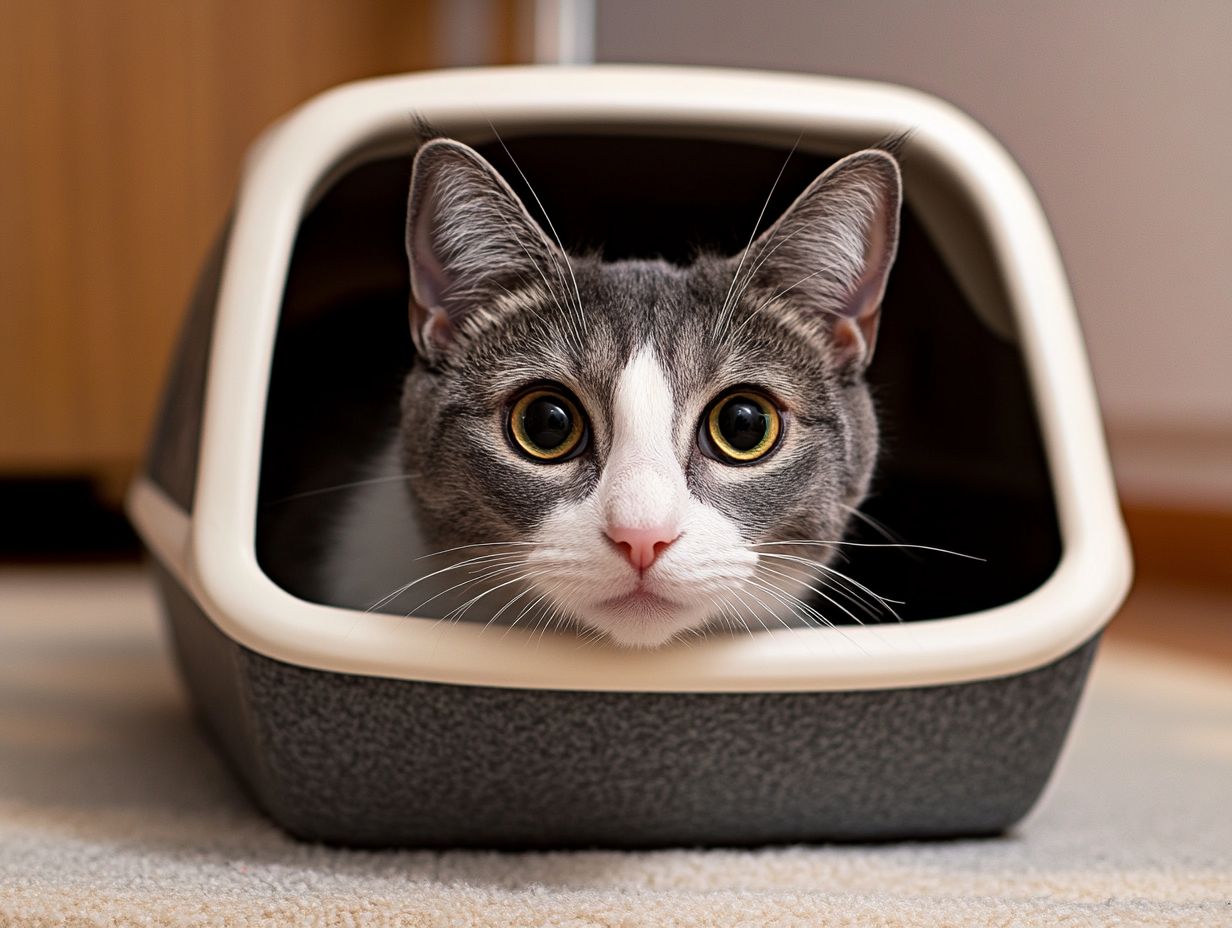
Open-top litter boxes offer several advantages for both cats and their owners. They allow for shorter jumps in and out, making it easier for cats to access their litter area comfortably.
Conclusion
When choosing the right litter box for your cat, always prioritize their comfort and cleanliness. Observe their behavior with different box types, provide positive reinforcement, and maintain a clean environment to encourage litter box use.
Additionally, these boxes simplify the cleaning process, following veterinary recommendations for owners, as they make it easier for cats to use the litter box. Without a lid, felines can step in and out effortlessly, while owners benefit from an unobstructed view that facilitates monitoring cleanliness.
This design significantly reduces the time and effort required for maintenance, making it an ideal choice for busy households and multi-cat homes. Furthermore, the open structure promotes improved airflow, effectively minimizing unpleasant odors compared to traditional enclosed boxes.
Overall, open-top litter boxes provide a practical solution that meets the needs of both pets and their owners. According to veterinarians, it’s recommended to have one litter box per cat, plus one extra, to ensure all cats have access when they need it.
3. Litter Box Furniture
Litter box furniture is designed to be both functional and stylish, providing a decorative solution that discreetly conceals the litter box while ensuring easy access for cats, making it ideal for multi-cat households. High sides on these pieces help prevent litter spillage and minimize odors, creating a cleaner environment for your home.
These pieces often incorporate features like easy access for cleaning and good ventilation, addressing the primary concerns of pet owners. Even in homes with multiple cats, this furniture helps minimize odors while facilitating effortless scooping and maintenance.
Many options also include extra storage spaces for litter and cleaning supplies, promoting a more organized environment.
What Are the Common Mistakes When Using Covered Litter Boxes?
Common mistakes related to litter box hygiene made by cat owners when using covered litter boxes include placing the box in cramped, dark, or cluttered environments, failing to clean it regularly, not providing sufficient litter depth (ideally 2-3 inches), and using the wrong type of litter, such as non-clumping or scented varieties. Experts recommend using unscented, clumping litter as it retains odors less and provides a more comfortable experience for cats. These issues can negatively impact litter box hygiene and, consequently, the welfare of cats and cat parents. An unpleasant environment may lead to behavioral problems, such as litter box avoidance.
Placement Mistakes with Covered Litter Boxes
One frequent mistake in litter box setup is placing covered litter boxes in cramped or dark spots. Ideally, the box should be situated in a well-lit area that offers privacy without feeling too claustrophobic. Avoid areas with high foot traffic or loud noises. A good approach is to place the covered box in a location where the cat can see you or where you can check on them without startling them. For example, a new covered box can be placed next to an uncovered one to help the cat transition if they have previously used an open litter box.
Cleaning Mistakes with Covered Litter Boxes
Another common error is neglecting regular cleanings. To prevent waste buildup and discourage cats from using the box, it should be cleaned daily. Covered litter boxes are more likely to trap odors, despite using unscented clumping litter compared to uncovered ones, making regular maintenance even more crucial. Consider using baking soda for additional odor control or pet-safe cleaning products recommended by experts.
Litter Depth Mistakes with Covered Litter Boxes
Providing insufficient litter depth is another mistake. The litter should be deep enough for the cat to bury waste (recommended depth is 2-3 inches), but not so deep that the cat can easily kick it outside the box. Covered boxes can help contain litter, especially if the cat is an energetic digger.
Litter Type Mistakes with Covered Litter Boxes
Finally, using the wrong type of litter can be problematic. Non-clumping varieties, for instance, may retain odors longer and be uncomfortable for the cat. Covered boxes work best when the litter is changed frequently, as part of effective litter maintenance to maintain a pleasant environment.
How to Keep a Covered Litter Box Clean and Odor-Free?
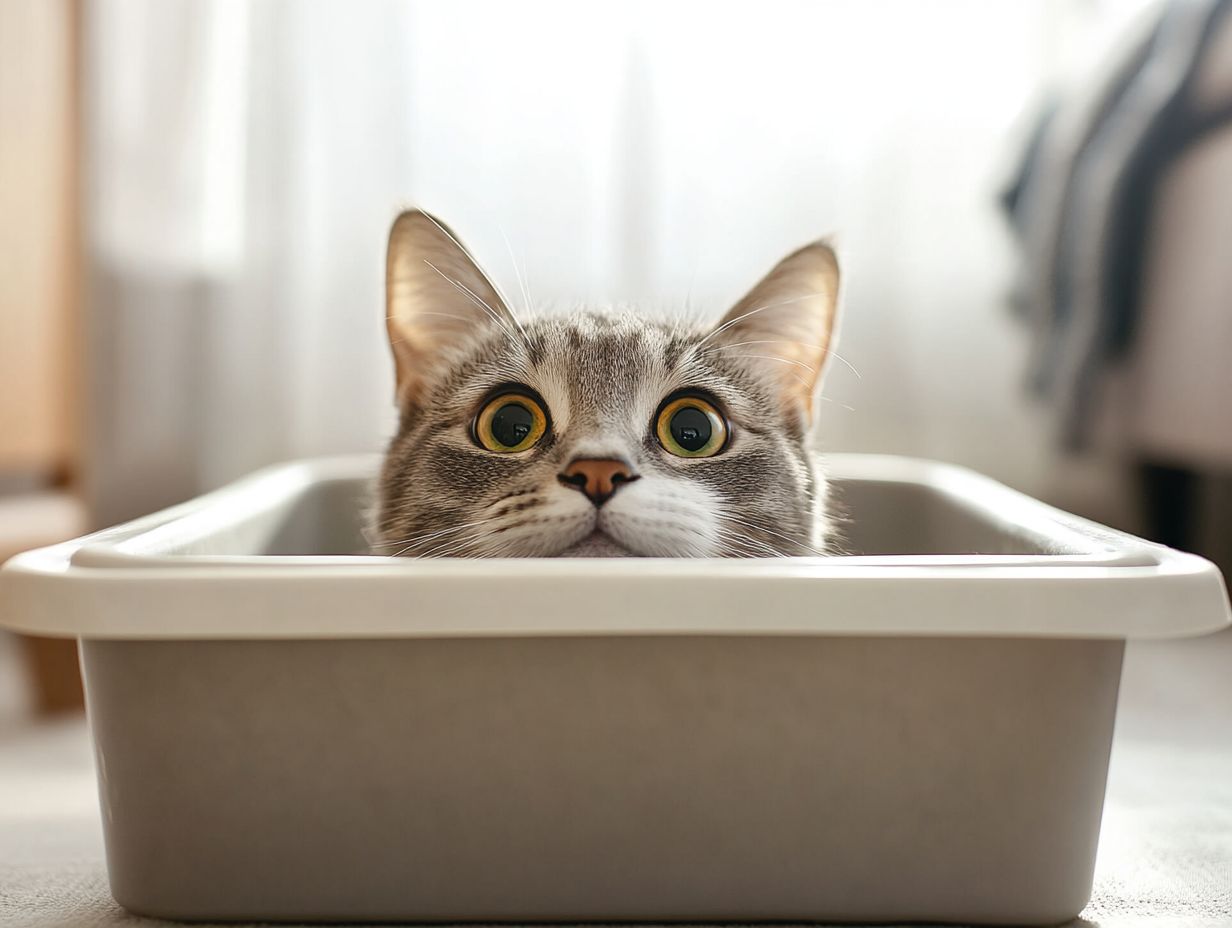
To keep both cats and humans happy, it’s important to follow best practices for litter box maintenance and cleaning.
- First, ensure that the covered litter box is scooped daily to prevent waste from causing odors to build up.
- Using scentless litter can help minimize strong smells while still effectively absorbing enough liquid to maintain a clean environment.
- The litter should be changed regularly, adhering to cleaning recommendations, at least once a week, to further reduce odors and keep the box inviting and suitable for feline companions.
- Additionally, the litter box should be washed regularly with a mild soap and water solution to eliminate any remaining bacteria and odors.
In summary, regular cleaning, proper litter choice, and mindful placement of the litter box are essential to maintaining a pleasant environment for both your cat and your home.
Exploring Litter Box Features and Alternatives
For cat owners exploring options, automatic cleaning litter boxes are a popular solution. These litter box systems can reduce maintenance time significantly, making them an attractive choice for busy cat owners.
Frequently Asked Questions
Do cats prefer covered litter boxes?
It depends on the individual cat. Some cats may feel more secure and comfortable using a covered litter box, while others may prefer an open one. According to veterinarians, it’s best to have one litter box per cat, plus one extra, to ensure comfort and access.
What are the benefits of using a covered litter box?
Covered litter boxes provide privacy for your cat and can help contain litter and odors. They also come in various designs to fit your home decor, making them a great choice for any household.
Do covered litter boxes require more maintenance?
Yes, covered litter boxes may require more frequent cleaning to prevent odors from building up inside. It’s important to regularly scoop and change the litter. Aim to change the litter at least once a week for optimal odor control.
Are there any downsides to using a covered litter box?
Some cats may feel confined or trapped in a covered litter box, which can cause them to avoid using it. It’s important to monitor your cat’s behavior and ensure they are comfortable.
Can I switch from an open litter box to a covered one?
Yes, you can switch to a covered litter box, such as those designed by tuft + paw, but it’s important to do it gradually. Start by placing the cover on one side of the litter box and gradually move it to fully cover the box over a few days.
What should I do if my cat refuses to use a covered litter box?
If your cat is showing reluctance to use a covered litter box, try removing the cover or switching back to an open one. Always ensure your cat has access to a clean litter box located in a safe area.
Benefits and Drawbacks of Litter Materials
When choosing litter, consider different materials. Clumping litter is easy to clean and helps control odors, while non-clumping litter may require more frequent changes. Biodegradable options are environmentally friendly but may not control odors as effectively. Assess your cat’s preferences to find the best fit.
Conclusion
Ultimately, the choice between covered and uncovered litter boxes depends on your cat’s behavior and preferences. Pay attention to their comfort and try different options. Encourage your cat to explore their new litter box and observe their reactions. If you have any concerns, consult with a vet or pet behaviorist for tailored advice.
